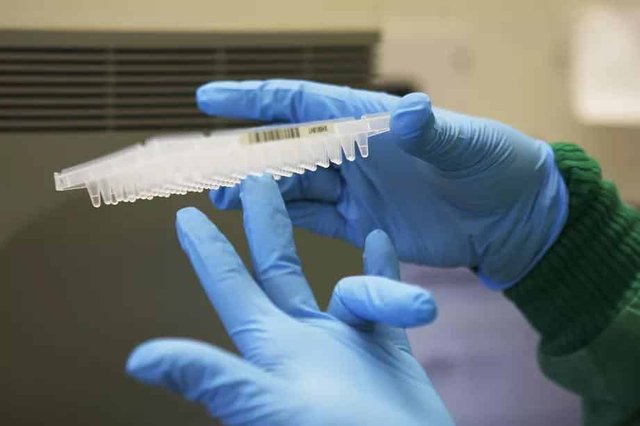A History Of Security Breaches At The Secret Labs That Research Deadly Pathogens
In October of 2014, the United States government placed a moratorium on biological research that engineered viruses to make them more dangerous. At the time, all federal funding was halted on these projects in the United States, but just a few years later, in 2017, the laws were changed to allow this type of research to take place if it was approved by a scientific panel. These panels are tasked with determining whether or not the benefits of such research outweighed the risks.
In scientific circles where this type of research is done, tweaking a virus to make it more deadly or transmissible is known as “gain of function.” Experts are divided over whether this type of research is safe, and if it is even necessary.
After the moratorium on "gain of function" research was lifted, Marc Lipsitch, an epidemiologist who directs the Center for Communicable Disease Dynamics at the Harvard School of Public Health, told the New York Times that these types of experiments “have given us some modest scientific knowledge and done almost nothing to improve our preparedness for pandemics, and yet risked creating an accidental pandemic.”
Gain of function research takes place at some of the most secure and sophisticated labs in the country, but unfortunately, these labs are not as secure as we have been led to believe.
In a separate interview with Vox, Lipsitch said, “If an enhanced novel strain of flu escaped from a laboratory and then went on to cause a pandemic, then causing millions of deaths is a serious risk.”
The threat of a pathogen leaking from a lab is very real, and it happens more often than you would think. In some cases, pathogens are intentionally taken from labs and used for evil purposes, as we saw with the Anthrax attacks in 2001, which took the lives of 5 people and sickened 17 others.
It was later determined that the attacks were carried out by Bruce Ivins, a microbiologist who worked on anthrax vaccines and treatment for over 35 years at the US Army Medical Research Institute of Infectious Diseases (USAMRIID) in Frederick, Maryland. The full details of this case are still unknown, since Ivins ended his own life before he was brought to justice, but the US government insists that he was guilty and that he acted alone. This is one of the very rare cases where it has been proven that a pathogen has been intentionally taken out of a lab, but mistakes are extremely common.
According to the Centers for Disease Control and Prevention (CDC), employees at laboratories in the United States were exposed to anthrax, and a deadly strain of the bird flu, as recently as 2014. That same year, the US Food and Drug Administration (FDA) found hundreds of vials containing different samples inside of old cardboard boxes that were tucked away in the cold storage room of one of the agency's laboratories. The samples were not properly labeled, but a few of them contained smallpox, and no one in the laboratory even knew about them. In fact, the boxes had been there for decades, and hadn't been accounted for since the 1960s.
In 2015, the US Army revealed that its chemical and biological defense facility at Dugway Proving Ground in Utah accidentally shipped live anthrax to seven countries.
In the United Kingdom, a recent investigation found over 40 accidents took place at laboratories in the country between June of 2015 and July of 2017, which averages out to one mishap every two or three weeks.
During that time period, at least four lab workers in the country became sick after contracting Shigella, a highly contagious bacterial infection that causes most cases of dysentery in Britain, according to the Guardian. The report mentioned a variety of other cases where lab workers were infected with different pathogens in a similar fashion.
These types of accidents have been happening for decades in the UK. In 1978, a photographer from Birmingham named Janet Parker contracted smallpox at a medical school where she was studying, after the disease had supposedly been eradicated from the human species. The pathogen was reportedly being studied in a lab at the campus, where one of the lab workers unknowingly contracted the illness and passed it along to others. Sadly, Parker quickly passed away from illness. Oddly enough, the scientist responsible for the lab took his own life shortly after the incident. When authorities discovered what happened, over 300 people in the area were quarantined, which luckily prevented a smallpox epidemic.
These types of lab accidents are also extremely common in China as well. In December of 2019, an article in Nature reported that more than 100 students and staff became infected with a different pathogen, known as bacterium Brucella, at two different Chinese agriculture research institutions. On December 7th, The Lanzhou Veterinary Research Institute in central China confirmed that 96 staff members and students have tested positive for the infection. Then days later, over a dozen workers at a nearby research lab were also infected with the pathogen. These cases are still being investigated.
According to the Scientist, the SARS virus has escaped from high-level CDC containment facilities in Beijing multiple times.
Most of the workers at these labs do their best to keep things safe and follow protocols, but when dealing with such dangerous pathogens, one mistake is enough to create a serious problem, and with so many labs operating around the clock in so many different locations around the world, it is inevitable that something will slip through the cracks eventually.


I've been having thoughts that this new virus seems too "though through" have you ever played a android game called "plague Inc"
It's just a silly game but makes u think
The way the new virus is highly contagious before showing symptoms and how some people can be carriers without actually falling sick, instead off quickly killing people long intensive care process that drains resources and incapacitate the health services there like the perfect options to achieve a global infection.
I entirely agree, that is what actually sent me down this rabbit hole to begin with :-P
Great minds think alike :)